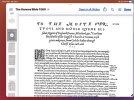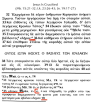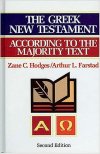Sorry but I don't read Greek. But if one can nit-pick at omitted Scripture from the Majority Text, we can bulk-pick from the Minority Text!
Stating facts with evidence is not nit-picking. It demonstrates the error of another's claim.
we can bulk-pick from the Minority Text!
Whatever the minority text has or does not has nothing to do with the majority text. Either something is part of the majority text or it is not. The ONLY way to know is to check the majority text as I did with Matthew 10:8. The phrase "raise the dead" is not in the majority text. And that is not the only example.
When you read the KJV or NKJV you are reading from the Majority Text.
This is not correct. Both the KJV and the NKJV followed the textus receptus not the majority text, and again they are not identical. If anyone cares to read the preface to the NKJV, it clearly states that translation used the textus receptus.
In regard to the textus receptus the NKJV Preface states:
"
The King James New Testament was based on the traditional text of the Greek-speaking churches, first published in 1516, and
later called the Textus Receptus or Received Text."
In regard to the majority text the NKJV Preface states:
"The Majority Text
is similar to the Textus Receptus, but
it corrects those readings which have little or no support in the Greek manuscript tradition."
The preface of the New King James Version

helpmewithbiblestudy.org
I feel that I must point out that the textus receptus and majority text are not the same with another example. Note there is no verse 37 in the majority text.
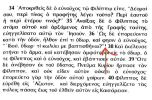
Verse 37 is not part of the majority text.
The Greek New Testament According to the Majority Text Second Edition
archive.org

Then I checked the Robinson-Pierpont edition of the
Byzantine Textform, and again verse 37 is not there.
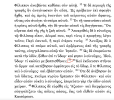
Keep in mind the above is the Byzantine text form.
Second Edition (2005, 2018) The New Testament in the Original Greek: Byzantine Textform, edited by Maurice A. Robinson and William G. Pierpont (Southborough, MA: Chilton Book Publishing, 2005). ISBN-10: 0-7598-0077-4 | ISBN-13: 978-0-7598-0077-9. This work has been released into the public...

byzantinetext.com
Then I checked Wilbur N. Pickering's apparatus note for more information (p. 272).

Pickering points out that 88% of manuscripts DO NOT HAVE verse 37. Only 0.6% have the same reading as found in the TR.
This claim that the majority text and the textus receptus are the same is demonstrably false.
The thousands of manuscript copies (3000 plus) contain the entire Bible in at least triplicate.
I find that claim to be suspect. Please provide objective evidence for this claim.

